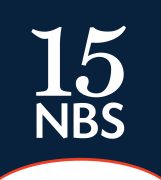The Supreme Court handed down judgment on 22nd April 2015 in the case of R v GH (2015) UKSC 24. Their Lordships I am pleased to report upheld my appeal against a terminating ruling pursuant to section 58 of the Criminal Justice Act 2003 made in September 2013 in a multi-handed fraud case at the Central criminal Court.
During the trial at the Central Criminal Court at the end of the case (before speeches) defence counsel for two (G and H) of the four defendants in the trial made a submission of no case to answer. The argument was attractive in its simplicity.
The Defendants each faced a charge of entering into or becoming concerned in a money laundering arrangement contrary to section 328(1) of the Proceeds of Crime Act 2002.
The allegation was that they had each entered into an arrangement with a sophisticated fraudster B to open bank accounts on his behalf. It was the Crown’s case that the defendants did so knowing or suspecting that money obtained from victims through B’s motor insurance frauds would be paid into those accounts. It was the Crown’s case that those fraud monies represented criminal property within the meaning of section 340 POCA 2002.
The Defence argued that there was no case to answer because at the time the defendants had entered into the arrangement no criminal property was yet in existence. They further argued that when the arrangement operated on the money it was not criminal property within the meaning of section 340 POCA 2002.
Paragraph 26-12 of Archbold was considered along with a number of authorities. The authorities relied upon were R v Amir and Akhtar [2011] EWCA Crim 146, R v Geary [2010] EWCA Crim 1925, Kensington International Ltd v Republic of Congo (2008) 1 WLR 1144 and R v Loizou (2004) EWCA Crim 1579 and Dhar v National Office of the Prosecution Service of the Netherlands (2012) EWHC 697 (Admin).
In short the defence submitted that these authorities supported the contention that for an offence to arise under section 328 POCA, the property in question has to be “criminal property” within the meaning of the 2002 Act at the time the accused person enters into or becomes concerned in the arrangement. In other words the argument was that criminal property had already to be in existence for an offence to be committed under section 328 POCA.
The judge ruled that there was no case to answer and the applicant appealed. The Court of Appeal held that it was not necessary that the property existed at the time the respondents entered into or became concerned in the arrangement. The Supreme Court agreed with this aspect of the Court of Appeal judgment in this case.
In respect of G the appeal was allowed on the basis that the money had already passed through another account before subsequently being transferred to G’s account and therefore it was clearly criminal property within the meaning of section 340 POCA 2002.
However in respect of H, the Court of Appeal in essence treated the case as indistinguishable from R v Geary and decided that the property in question was not criminal property within the meaning of section 340 POCA 2002. The Crown’s appeal was dismissed in respect of H.
It was my view that if the arrangement which arose in this case did not in law constitute money laundering at all, then it was a money launderer’s charter and that could not have been the intention behind POCA 2002. The authorities relied upon by the Defence could all be distinguished. It was clear from these authorities that it was the nature of the property at the time that the arrangement operated upon it, which was important. If it was the arrangement itself which rendered the property, criminal property, then difficulty arose under section 328 (1) POCA 2002. That though was not the situation here.
I persuaded the Court of Appeal to certify a point of law of general public importance and following further argument in the Supreme Court the ruling of no case to answer was found to be erroneous.
The Supreme Court, in essence distinguished the case of Geary. At para 46 Toulson LJ said the following:
“It was not a case of the defendant holding proceeds originating from a crime independent of the arrangement made between them. It was Harrington’s lawfully owned property when it was paid to the defendant…it bore no criminal taint apart from the arrangement made between them. The fact that the arrangement involved a conspiracy to pervert the course of justice did not mean that the money had a criminal quality independent of the arrangement.”
Toulson LJ continued at para 47:
“The present case is different. The character of the money did change on being paid into the respondent’s accounts. It was lawful property in the hands of the victims at the moment when they paid it into the respondent’s accounts. It became criminal property in the hands of B, not by reason of the arrangement made between B and the respondent but by reason of the fact that it was obtained through fraud perpetrated on the victims. There is no artificiality in recognising that fact, and I do not see it as illegitimate to regard the respondent as participating in (or, in the language of section 328, entering into or becoming concerned in) an arrangement to retain criminal property for the benefit of another. For that reason, the ruling that the respondent had no case to answer was erroneous and this appeal should be allowed.”
A victory for the Crown and indeed for common sense.
29th April 2015
ANN MULLIGAN

